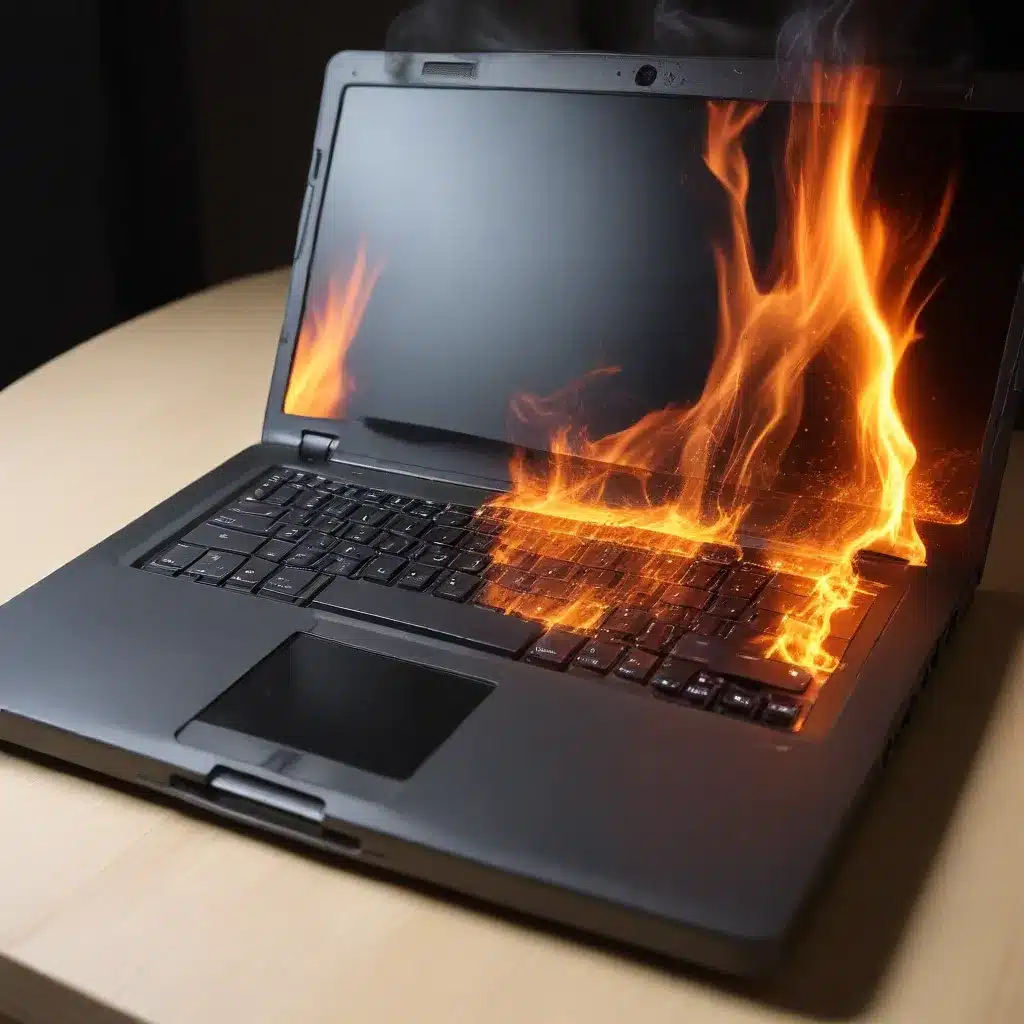
Laptop Overheating: Causes, Symptoms, and Effective Solutions
Laptops have become an integral part of our lives, enabling us to stay connected, productive, and entertained on the go. However, as these compact powerhouses continue to pack more processing punch, they also face a common challenge – overheating. A laptop that runs too hot can lead to all sorts of problems, from sluggish performance to hardware failure. If you’ve been struggling with a laptop that seems to turn into a portable space heater, fear not. In this comprehensive guide, we’ll dive deep into the causes of laptop overheating, the tell-tale signs to look out for, and the most effective strategies to keep your device cool and running at its best.
Hardware Components and Their Role in Overheating
At the heart of every laptop lies a complex ecosystem of hardware components, each playing a crucial role in its overall performance and thermal management. Let’s take a closer look at the key players:
Processor (CPU): The central processing unit (CPU) is the brain of your laptop, responsible for executing instructions and powering various applications. As the CPU works harder, it generates more heat, which needs to be efficiently dissipated to prevent overheating.
Graphics Card (GPU): Modern laptops, especially those marketed for gaming or content creation, often feature dedicated graphics processing units (GPUs) to handle intensive visual tasks. These powerful components can also contribute significantly to the overall heat output.
Motherboard: The motherboard serves as the foundation, connecting all the hardware components together. Improper cooling or design flaws on the motherboard can impede efficient heat dissipation.
Cooling System: Laptops rely on a carefully engineered cooling system, typically comprising heatsinks, fans, and vents, to regulate the temperature of critical components. If this cooling system is compromised, overheating becomes an inevitable consequence.
Overheating Causes: Identifying the Culprits
Now that we’ve understood the key hardware components involved, let’s delve into the common causes of laptop overheating:
Inadequate Cooling: One of the primary reasons for laptop overheating is an ineffective cooling system. Factors like blocked vents, malfunctioning fans, or simply poor airflow can prevent the laptop from effectively dissipating the heat generated by its internal components.
Dust and Debris Buildup: Over time, laptops can accumulate dust, pet hair, and other debris, which can clog the cooling system’s vents and fans, severely impacting their efficiency.
Excessive CPU/GPU Usage: Running resource-intensive applications, such as video editing software, 3D modeling tools, or the latest games, can push the CPU and GPU to their limits, causing them to generate excessive heat.
Faulty Hardware Components: In some cases, the root cause of overheating may lie in a hardware issue, such as a failing cooling fan, a malfunctioning heatsink, or even a problem with the CPU or GPU itself.
Environmental Factors: The ambient temperature of the environment in which you use your laptop can also contribute to overheating. Using your laptop in a hot, poorly ventilated room or direct sunlight can overwhelm the cooling system.
Thermal Management Strategies: Keeping Your Laptop Cool
Now that we’ve identified the potential causes of laptop overheating, let’s explore the strategies you can employ to keep your device running at a comfortable temperature:
Power Management Settings: Many laptops offer built-in power management settings that allow you to control the performance and thermal behavior of your device. Exploring options like processor throttling, thermal thresholds, and fan speed control can help you strike the right balance between performance and heat generation.
Physical Cooling Solutions: Investing in external cooling solutions can provide a significant boost to your laptop’s thermal management. These include:
– Heatsinks and Fans: Additional heatsinks and fans can be installed to improve heat dissipation.
– Liquid Cooling Systems: Some high-end gaming laptops feature liquid cooling systems to achieve more efficient cooling.
– External Cooling Pads: Laptop cooling pads with built-in fans can help draw hot air away from your device.
Diagnostics and Monitoring: Staying Informed
To effectively address laptop overheating, it’s crucial to have a good understanding of your device’s thermal performance. Here are some tools and techniques to help you monitor and troubleshoot the issue:
Performance Monitoring Tools: Software like HWMonitor, Core Temp, or CPUID can provide detailed information about your laptop’s CPU and GPU temperatures, as well as other system metrics.
Troubleshooting Techniques: If you suspect a hardware-related issue, you can try cleaning the laptop’s interior, reapplying thermal paste, or even seeking professional assistance for more advanced diagnostics and repairs.
Software Optimizations: Ensuring that your laptop’s drivers, firmware, and operating system are up-to-date can help improve thermal management and prevent software-related overheating.
Preventive Measures: Proactive Maintenance
The best way to deal with laptop overheating is to be proactive and implement preventive measures. Here’s what you can do:
Regular Cleaning and Dust Removal: Make it a habit to clean your laptop’s vents, fans, and other cooling components on a regular basis, using compressed air or a soft brush.
Thermal Paste Reapplication: Over time, the thermal paste that helps transfer heat from the CPU and GPU to the heatsinks can degrade. Reapplying a fresh layer of high-quality thermal paste can significantly improve heat dissipation.
Environmental Considerations: Ensure that your laptop has adequate airflow and ventilation, and avoid using it in direct sunlight or in hot, confined spaces.
By understanding the underlying causes of laptop overheating, implementing effective thermal management strategies, and proactively maintaining your device, you can keep your trusty laptop running cool and at peak performance. Remember, a well-cooled laptop not only lasts longer but also delivers a more reliable and enjoyable user experience.
So, the next time your laptop starts feeling like a furnace, don’t panic – refer back to this comprehensive guide and take the necessary steps to keep your device in tip-top shape. Happy computing, and may your laptop never overheat again!












